Plovdiv – City оf Artists
City Art Gallery /Permanent Exhibition/ – Permanent exhibition of the artist Georgi Bozhilov – Slona (The Elephant); Permanent exhibition of the artist Zlatyu Boyadzhiev; Permanent exhibition “Icons from the Plovdiv Region”; Permanent exhibition of the artist Dimitar Kirov; Museum House “Atanas Krastev – Nacho Kulturata” /The Red Pony Gallery/; Permanent exhibition of the artist Tsanko Lavrenov; Permanent exhibition “Mexican Art”; Permanent exhibition of the artist Encho Pironkov; Museum Gallery “Philippopolis”; Venues for temporary exhibitions at the City Art Gallery
The city of Plovdiv is traditionally and rightly regarded as a city with strong presence of artists, whose creative development affects the Bulgarian fine arts. There is a representative and operative structure of municipal, private and non-governmental institutions with the following activities: the City Art Gallery, permanent exhibitions and other collections, over 30 private galleries, the Society of Plovdiv Artists, Philippopolis Company and other associations, Faculties of Fine Arts in the Plovdiv University and the Academy of Music, Dance and Fine Arts, two art high schools, centers for children, special schools and others.
CITY ART GALLERY – Permanent exhibition of Bulgarian art
14a, Saborna Street,
Currently, the building is closed for visitors due to massive repair and restoration work.
In 1881 the National Library and Museum of Plovdiv received four copies of the portraits of the donors of the Boyana Church (1259) made by the Tryavna-born painter Simeon Ts. Simeonov. Later on, in 1911, the museum established an Art Department with 25 artworks in holding. During the time of Chief Librarian Nikolay Raynov (1922) many engravings, prints, and lithographs, including graphics and paintings by Nikolay Pavlovich were added to the collection. From 1926 to 1931 the appointed curator Nikola Mavrodinov added eight magnificent sixteenth century icons from the town of Nessebar.
In 1930, Tsar Boris III donated the painting “Portrait of Sophronius of Vratsa” (1812) to the National Library and Museum, which is considered the first secular portrait in Bulgarian art.
On 01.01.1950 was established the City Art Gallery Office under the Science, Art and Culture Department of the City Art Gallery of Plovdiv, headed by the artist Angel Tomov.
The official opening of the gallery, then called the State Art Gallery of Plovdiv, was on March 2nd, 1952. Its first Director was Georgi Chaykovski. In 1997 it was renamed to the City Art Gallery.
The collection of the gallery in 1952 had about 300 works collected from the National Archaeological Museum of Plovdiv, the Ivan Vazov State Library of Plovdiv, the Regional Museum at the Regional Standing Committee of Plovdiv, the Plovdiv Municipal Museum Townhouse (as of 1949 – the Ethnographic Museum, a collection of the Science, Art and Culture Department, the Museum at the St. Augustine French Male College of Plovdiv, the National Academy of Arts of Sofia and the National Art Gallery of Sofia.
Currently, the City Art Gallery of Plovdiv has a total of 7,561 works, of which 2,646 are paintings, 2,562 – graphics, 545 – sculptures and applied arts, 574 – icons, 1,234 – Mexican art.
There are especially representative collections from the works of Georgi Danchov, Stanislav Dospevski, Nikolay Pavlovich, Mihail Lyutov, Hristo Stanchev, Tsanko Lavrenov, Zlatyu Boyadzhiev, Georgi Atanasov, Krum Dzhakov, works from the majority of the South Bulgarian artists, as well as from the generation of the second half of the twentieth century – Georgi Bozhilov Yoan Leviev, Kolyu Vitkovski, Encho Pironkov, Dimitar Kirov, Hristo Stefanov and many others. In the first years of the 21 century were received large donations from the artists Nikola Pevicharov and Dimitar Kirchev.
The exhibition is housed in the building of the Girls’ High School, designed and built under the leadership of architect Joseph Schnitter in 1881. It is arranged chronologically on three floors. Over 200 original artworks tracing the development of the Bulgarian art from the Renaissance to the present day are included. Many prominent authors and distinctive stylistic trends are also presented.
The Plovdiv collection is among the richest in the country in terms of artistic works from the earlier periods of development of Bulgarian art. The paintings section begins with the earliest dated secular artwork (1812) – a portrait of Sophronius of Vratsa, the founder of the New Bulgarian printed book and fighter for religious and political independence.
On display are also artworks of our greatest Renaissance artists, who worked in the era of the Ottoman rule and in the first years after the liberation – Georgi Danchov, Stanislav Dospevski and Nikolay Pavlovich. Among them can be seen the most famous and the most authentic portrait of Vasil Levski painted by Georgi Danchov.
There are also artworks of the brightest representatives of the next generation of Bulgarian artists – Ivan Markvichka, Anton Mitov, Hristo Stanchev, Konstantin Velichkov, Tseno Todorov, Goshka Datsov, Boris Georgiev, Konstantin Shtarkelov, Vladimir Dimitrov – Maystora, Sirak Skitnik, Tsanko Lavrenov, Zlatyu Boyadzhiev, David Peretz, the generation of artists from the 60s of the twentieth century and contemporary artists that highlight the originality and the uniqueness of Bulgarian art and culture and its relations with European art.
Permanent exhibition of the artist Georgi Bozhilov – Slona (The Elephant)
1, Knyaz Tseretelev Street
Georgi Bozhilov (1933 – 2001) is one of the brightest representatives of the generation of Plovdiv artists from the 60s of the 20 century. His art is distinguished by a subtle aesthetic and artistic sense, culture in the contours and mastery of composition. His paintings are full of poetic softness coming from the monochrome colors, the perfect composition and the delicate work with the scenic matter. He is one of the first Bulgarian artists to create abstract art.
The exhibition was opened in 2002. It presents 42 of the best works of the artist. His development and his work on popular personal and socially engaged topics can be traced.
Permanent exhibition of the artist Zlatyu Boyadzhiev
18, Saborna Street
The exhibition was opened in 1984. It is located in the house of the eminent National Revival figure Dr Stoyan Chomakov. The house was built in 1858 – 1860 and was for some time a residence of the Bulgarian Tsar Ferdinand Saxe-Coburg. The bust-monument of Zlatyu Boyadzhiev is the work of sculptor Emil Popov.
Zlatyu Boyazdhiev (1903 – 1976) is one of the most famous Bulgarian artists, with a strong authentic radiation, characteristic and memorable style, and unique creative individuality.
The exhibition includes 76 artworks from the period before and after the paralysis (1951) of his right hand, revealing his peculiar biblical world view. His striving to find harmony between the creations of nature and the creations of man, to understand and illustrate the endless procession of birth and death, to discover the sensitivity and the poetics in the nature and the simplicity in everyday life, transforms into artistic harmony and a moral norm. The horizons in his paintings seem lively and dictated by the will of nature and its creator, shapes, lines, moods and destinies. They are never perceived as borders and do not stop the imagination, because the author’s main message is the belief in the existence of mystery.
CITY ART GALLERY – Permanent exhibition “Icons from the Plovdiv Region”
22, Saborna Street
Some of the icons of the City Art Gallery are exhibited in the building of the old elementary school to the St. St. Konstantin and Elena Church (60s of the 19 century). They present a representative portion of our national treasury. The best specimens selected from the rich fund of the gallery and from the collection of the Plovdiv Bishopric illustrate the development of the iconographic artistry in the Plovdiv Region for a period of five centuries. The oldest and the most valuable works are icons from the 15 – 16 centuries intended for the royal order in the iconostasis of medieval churches.
The exhibition presents artworks of master painters from the Middle Ages and of one of the most prominent representatives of the Renaissance iconography schools: Hristo Dimitrov – founder of the Samokov School, of his sons Dimitar and Zahari Zograf, of his grandson Stanislav Dospevski, icons by Tryavna masters, of Adrianople iconographers and others. There are also thematic exhibitions held at regular intervals that use the abundant funds to reveal the rich symbolism in Christian art.
Permanent exhibition of the artist Dimitar Kirov
15, Kiril Nektariev Street
On the eastern slope of the Dzhambaz Tepe is located the impressive in size and exterior decoration house of Veren Stambolyan, known in the 70s and the 80s of last century as the House of Artists in the city of Plovdiv. The house used to experience a burst of cultural life – workshops and exhibitions were organized that made it an international cultural center. The building is located in the back yard. Its facade grabs the attention with the exquisite pattern with light and shade effects of ornaments.
In 2010 in the house was placed the permanent exhibition of artworks by Dimitar Kirov. He is from the Plovdiv School and is one of the brightest representatives of Bulgarian art from the 60s and the 70s, whose creative heritage has innovative spirit. His creative achievements are in the field of the fine and decorative – monumental art. The author has won numerous national and international awards and honors. The exhibition features some of the best examples of the themes and the stages of his creative work. mosaics on the topic “favorite cities” can be seen in the yard.
Museum House “Atanas Krastev – Nacho Kulturata” (The Red Pony Gallery)
5a, Dr. Stoyan Chomakov Street
The house was built in the late 18th century, in an asymmetrical style that preserved the influence of the medieval house facing the yard. With its 130 square meters the building looks quite imposing. All rooms on both floors are furnished with authentic baroque furniture.
The complete restoration of the house was done in the early 60s.
This is the home of the person, lovingly called by many “the Mayor of the Old Plovdiv”, a home, in which Atanas Krastev, or better known as Nacho Kulturata, lived the last 50 years of his life – the man, who rebuilt and revitalized the Old Town and inhabited it with the spirits of writers, poets, artists, actors and musicians. The nickname Nacho Kulturata is the recognition of the people to the Mayor, for whom the Old Town was a vocation, a passion, a destiny and a bride in a way, for a period of 32 years.
The museum was founded in 2003, immediately after the death of the eminent Bulgarian, who devoted his entire adult life to the restoration and enhancement of the architectural reserve Old Town.
Besides the preserved characteristic Renaissance interior, typical of the old Plovdiv houses, the museum visitors can also experience the atmosphere of his home and his intimate world through the preserved belongings and furniture that were surrounding him throughout his life.
The Red Pony Gallery was founded in 1989 as the first private art gallery in the city of Plovdiv by Atanas Krastev – Nacho Kulturata. From its establishment until now, the Red Pony Gallery has been a gracious host to the works of many famous Bulgarian and foreign authors. It has housed the painting of Svetlin Rusev, Georgi Bozhilov – Slona (The Elephant), Dimitar Kirov, Milko Bozhkov, Stoyan Tsanev, Yoan Leviev, Svilen Blazhev, Angel Geshev, Andrey Daniel, Nikola Karamphilov, Ion Gheorghiu, and many others.
CITY ART GALLERY – Permanent exhibition of the artist Tsanko Lavrenov and permanent exhibition “Mexican Art”
11, Artin Gidikov Street
The Mexican art is presented on the first floor – contemporary Mexican graphica, art crafts and copies of stone sculptures and ceramics, musical instruments from ancient cultures of Mexico. Since the beginning of the twentieth century the graphic art in Mexico, along with the monumental paintings, has had a strong social effect, because of the possibility to be spread and reproduced in print media. Its development was boosted by the works of the great Mexican artist José Guadeloupe Posada. Almost all Mexican artists work with graphic techniques and develop graphic art with the idea to make it more accessible to a large number of audiences.
The collection of 1,150 graphics is enriched with copies of Pre-Columbian stone sculptures and ceramics, applied art works and copies of traditional musical instruments. The exhibits were donated in honor of the 1300th anniversary of the Bulgarian state. The Museum was opened in 1981.
On the second floor is located the permanent exhibition of works by artist Tsanko Lavrenov (1896 – 1978). He is among the purest Bulgarian primitivist, drawing inspiration from cultural heritage, iconography and folk tradition. His distinctive talent enriched the characteristic of the Bulgarian culture movement “For Native Art”. His is the author of many publications in the field of the old and new period in Bulgarian painting and graphics.
The artist’s 60 paintings on exhibit give a complete picture of his work, in which the atmosphere, the spirit and the lifestyle of the Bulgarian National Revival and the present days of the artist have been recreated through an original individual style. His paintings “Old Plovdiv”, “A Little Night Music” and “Fair” are emblematic of the Bulgarian art and the cycle “Monasteries” is a wonderful artistic document of the Bulgarian spiritual culture during the Renaissance.
The exhibition is enriched with texts, photographs, facsimiles, and many paintings by the artist.
CITY ART GALLERY – Permanent exhibition of the artist Encho Pironkov
1, Vasil Kanchev Street
The exhibition includes 45 works donated by the author, covering different periods of his creative development.
Encho Pironkov (born in 1932) is from the generation of artists, who in the 60 years of the twentieth century updated the image not only of the Plovdiv School of Painting, but also of Bulgarian fine arts. At the time of a totalitarian culture they created and developed a new modern plastic thinking that joined them to the European artistic processes and launched the Bulgarian modernism through the affirmation of a new outlook in terms of shape and color.
The style of Encho Pironkov features a strong expressive gesture in the application of the paints, a vivid color with alternating warmth and coolnees. He fragmented the space and fitted figures occupying ritual poses therein. The drama of the communication with these compositions is enhanced by the mystique of the thematic message and by the strong opposition between light and dark.
Philippopolis Museum Gallery
29, Saborna Street
On September 17th, 2003, in the restored and adapted by Teodora and Stefan Maletsovi house of Hadzhi Aleko Tsvetkov, built in 1865, was opened an exhibition with paintings from their collection. This is the first private art museum of the classical painting tradition in Plovdiv that is open for visits. The paintings were collected for years with a collector’s persistence in order to show the best of the old and the contemporary Bulgarian art.
The collection includes known and unknown paintings by famous Bulgarian masters like Encho Pironkov, Dimitar Dobrovich, Georgi Mitov, Tseno Todorov, Nenko Balkanski, Zlatyu Boyadzhiev, Tsanko Lavrenov, Dimitar Kirov, Teofan Sokerov, Konstantin Shtarkelov, George Mashev, Elena Karamihailova, Nikola Tanev, Sirak Skitnik, Daniel Dechev, Hristo Stanchev, Tsanko Lavrenov, Vasil Barkov and others. There are also some forgotten artists like: Dimo Sotirov, Dimitar Kumanov, Anastas Staykov, Darena Georgieva, Nyagol Stanchev and others.
The collection of contemporary authors highlights the extraordinary wealth of names, styles and artistic trends in contemporary Bulgarian art, in particular that created in the city of Plovdiv. Exhibitions of old masters and modern artists are periodically opened.
CITY ART GALLERY – Temporary Exhibitions Halls
15, Knyaz Alexander I Street
The exhibition areas are housed in a building with the typical urban architecture of the early 20th century. In the halls on both floors are presented temporary exhibitions of prominent Bulgarian and foreign artists.






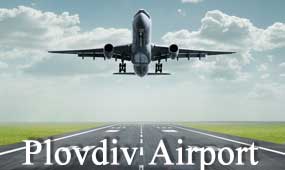
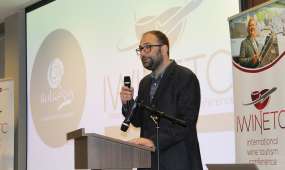
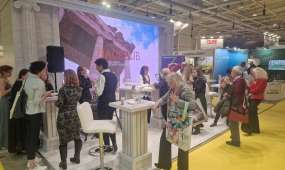
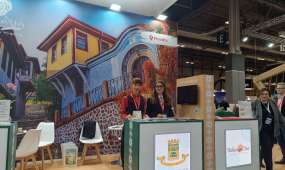
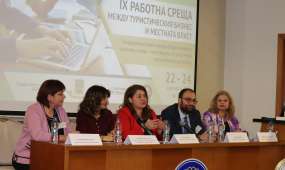

Add new comment